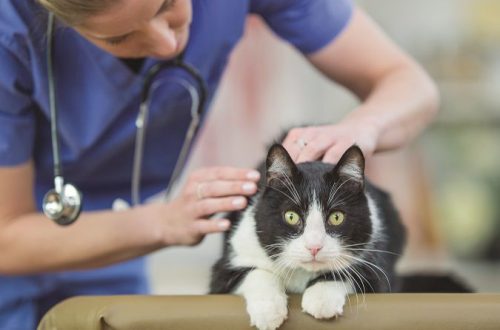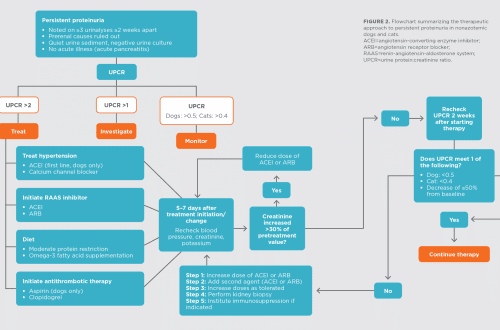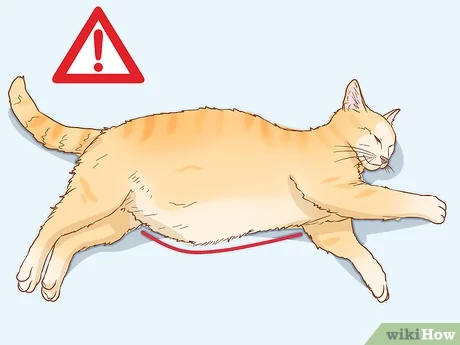
Swollen and hard belly in a cat or cat – what to do?
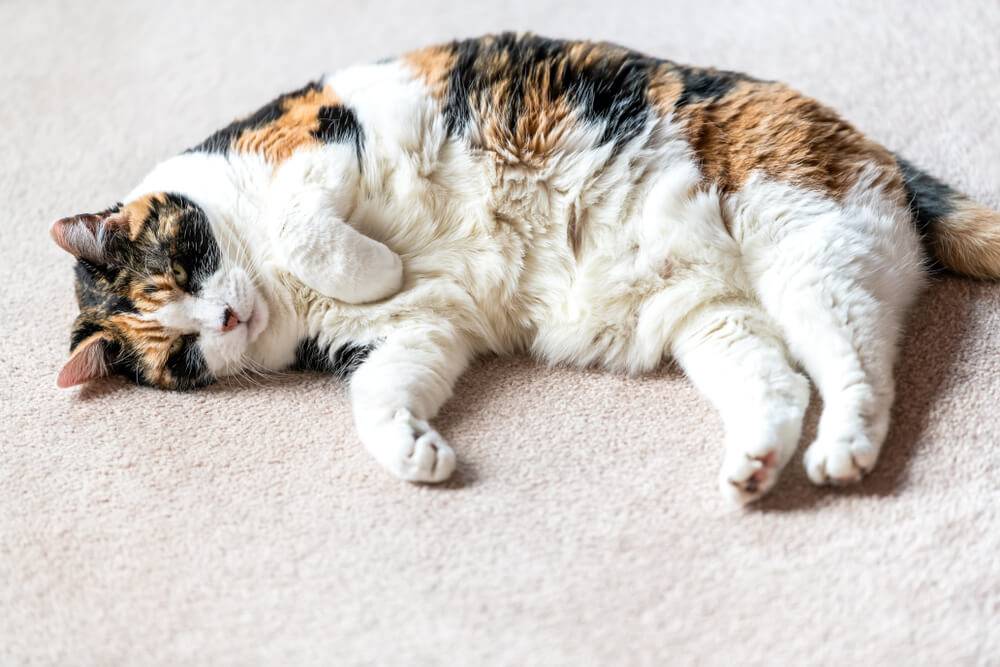
Contents
Bloated belly in a cat: the main thing
A swollen belly can be both in a kitten and in an elderly cat;
The causes of an inflated belly in a cat can be very diverse – from obesity to a tumor process;
An obligatory method for diagnosing this problem is an ultrasound of the abdominal cavity;
There is no symptomatic treatment in this case, it is imperative to find out the cause of the disease.
Possible Causes of Bloating
Next, we will consider the possible causes of a hard stomach in a cat, conditionally dividing them into non-dangerous and dangerous (i.e., life-threatening pets).
Non-dangerous states
Obesity – the scourge of modern domestic cats. Locked in four walls, cats do not hunt and move little, which makes obesity almost inevitable. Abundant deposits of subcutaneous fat in the belly area of a cat or cat can form not only folds, but also a voluminous large belly.
Pregnancy is a normal physiological process in which the pet’s abdominal cavity increases significantly. Of course, this condition occurs only in females. Pregnancy often comes as a surprise to cat owners, especially if the pet ran outside the day before or you picked it up recently. Pregnancy in cats lasts about two months. If the cat has a large belly, but you are sure that she is not pregnant, it is still necessary to do an abdominal ultrasound to rule out an “interesting” position.
Flatulence, or bloating, can be attributed to both benign and (in advanced cases) and dangerous conditions. Most often, this condition occurs when a pet is overfeeding sharply (this often happens if we took a hungry cat from the street), when feeding spoiled food or giving food that is unsuitable for a cat (for example, a large portion of milk for a cat that is not used to drinking it).
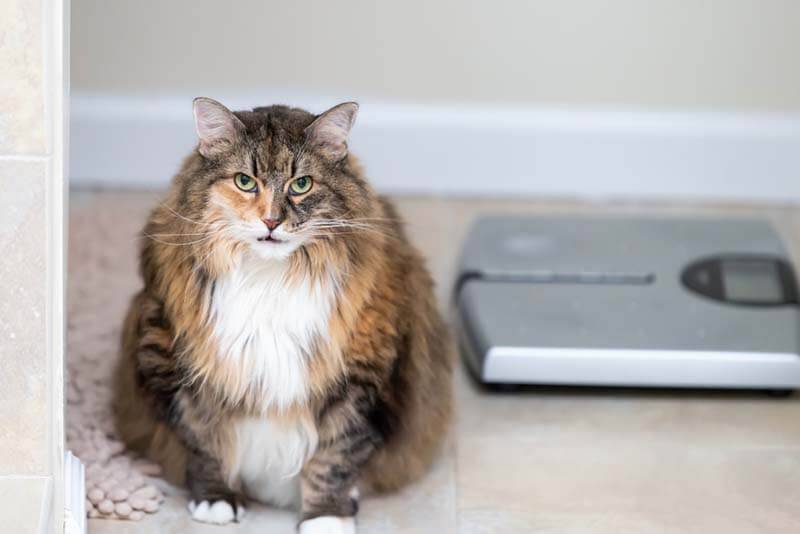
Dangerous conditions
Viral diseaseswhich can lead to bloating. For example, infectious peritonitis is a dangerous, contagious and intractable disease.
Neoplasms, such as lymphoma, often produce abdominal effusion and, as a result, a bloated abdomen. Despite the fact that such conditions are most often incurable, a timely diagnosis and chemotherapy can extend the life of a pet by several years.
Heart Disease can lead to what is known as congestive heart failure, which can cause fluid to accumulate in both the chest and abdomen.
Coprostasis, or constipation, is a common problem in domestic cats. In a neglected state, the stomach of cats and cats increases, thickens, becomes inflated and hard. Unfortunately, enemas do not always help in such conditions, and surgery may be required.
Renal insufficiencycaused by diseases such as chronic kidney disease. In an advanced case, it can also lead to dropsy of the abdominal cavity, manifested by bloating in cats and cats.
liver disease, such as lipidosis and cirrhosis, cause stagnation of blood in the abdominal cavity and, as a result, ascites (dropsy), as a result of which the cat’s stomach swells.
Injuries, most commonly associated with falls from heights, can damage the spleen, large vessels, and other organs, causing internal bleeding and rapid abdominal enlargement.
Pyometra, or purulent inflammation of the uterus, is very common in adult unsterilized cats, especially after the use of hormonal drugs as a relief from heat. It is for this reason that all cats are recommended to be spayed.
Helminthic invasion is far more common than pet owners might realize. In advanced cases, parasites can clog the intestinal wall, cause perforation of its wall, peritonitis and, as a result, the cat will have a painful, hard stomach.
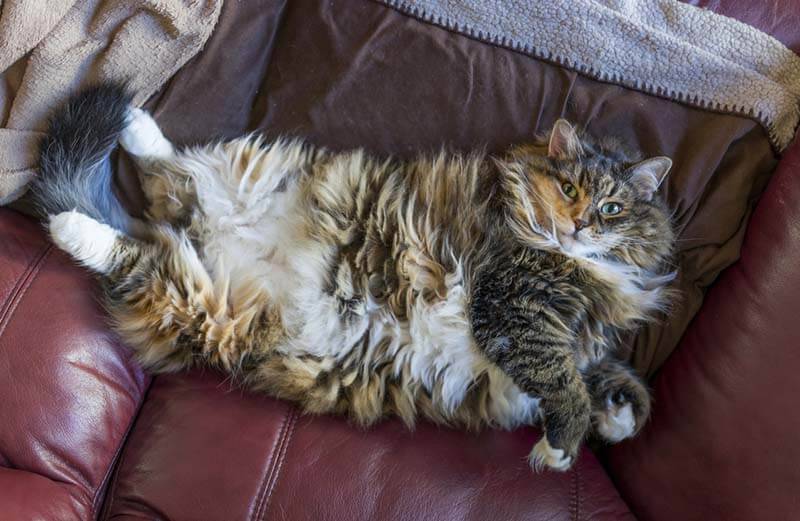
Bloating in a kitten
Bloating in kittens can be normal after a heavy meal, but most often it indicates the presence of a helminthic infestation. Also, a disproportionately large and hard belly in a cat can be with rickets (secondary feeding hyperparathyroidism). Older kittens may have infectious peritonitis.
Concomitant symptoms
Associated symptoms of bloating include:
depressed state of the pet;
lethargy;
rapid breathing;
vomiting;
lack of appetite;
constipation;
pale or icteric mucous membranes;
increased thirst.
There may not be any other symptoms if, for example, the cat has a helminthic invasion or ordinary obesity.
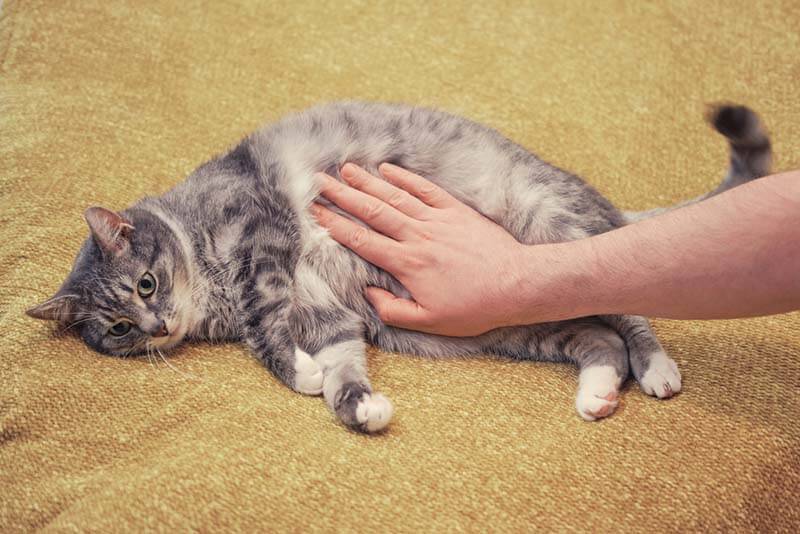
Diagnostics
Diagnosis of bloating must be comprehensive and include blood tests (general and biochemical), urine, abdominal ultrasound and x-rays. In some cases, especially when neoplasms are suspected, a CT scan is recommended.
The following are the primary diagnostic methods, depending on the suspicion of various causes of swelling:
Obesity – pet weighing, diet analysis, palpation;
Pregnancy – Ultrasound of the abdominal cavity;
Flatulence – analysis of the diet, ultrasound of the abdominal cavity;
Viral disease – specific virological tests (PCR analysis of blood and effusion fluid);
neoplasm – Ultrasound of the abdominal cavity, a survey x-ray in three projections, CT in the “cancer search” mode;
Heart Disease – ECHO of the heart;
liver disease – general and biochemical blood tests, ultrasound of the abdominal cavity;
Kidney – general and biochemical blood tests, abdominal ultrasound, urinalysis;
Coprostasis – X-ray of the abdominal cavity;
Injuries – Ultrasound of the abdominal cavity;
Pyometra – Ultrasound of the abdominal cavity;
Helminthic invasion – analysis of feces.
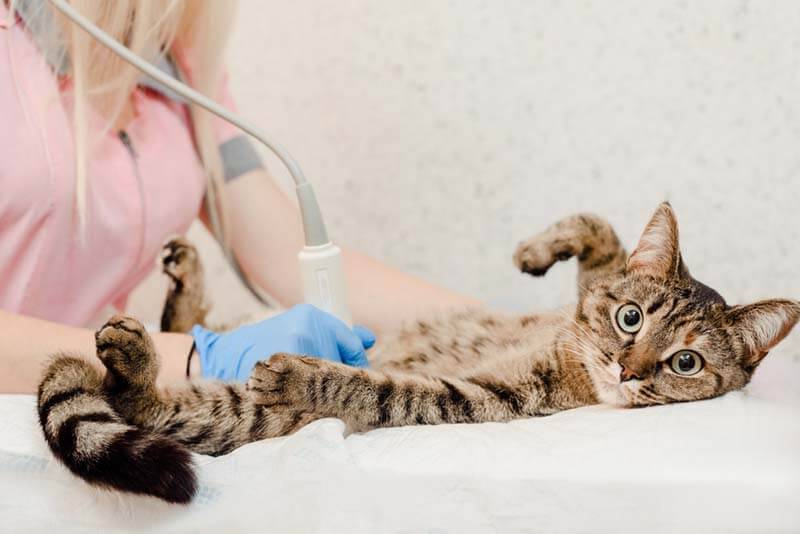
Treatment
Treatment directly depends on the cause of swelling:
Obesity requires a revision of the pet’s diet, a change in the frequency of feeding, as well as stimulating the cat to lead an active lifestyle;
Pregnancy, of course, is not a disease and does not require treatment;
If the cat has flatulence, then it is necessary to analyze her diet, it is possible to use a dietary diet, espumizan is used as symptomatic therapy;
Viral diseases require specific treatment prescribed by a doctor;
If you suspect neoplasm to identify the type of tumor, one of the types of biopsy is necessarily carried out, according to the results of which surgical or conservative treatment (chemotherapy) is prescribed;
Heart Disease require special treatment depending on the type of disease and the stage of developed heart failure;
liver disease are treated symptomatically and by following a strict diet;
Kidney, unfortunately, are mostly incurable (except for acute kidney injury), in this situation only supportive treatment is used;
RџSЂRё coprostasis a cleansing enema or even surgery is performed (with overstretching of the intestine, lack of motility, and other pathologies), a diet analysis is also mandatory, and laxatives are sometimes prescribed orally;
Injuries most often require surgical intervention;
RџSЂRё pyometra in cats, only surgical treatment is used;
Helminthic invasion treated with a course of anthelmintic drugs.
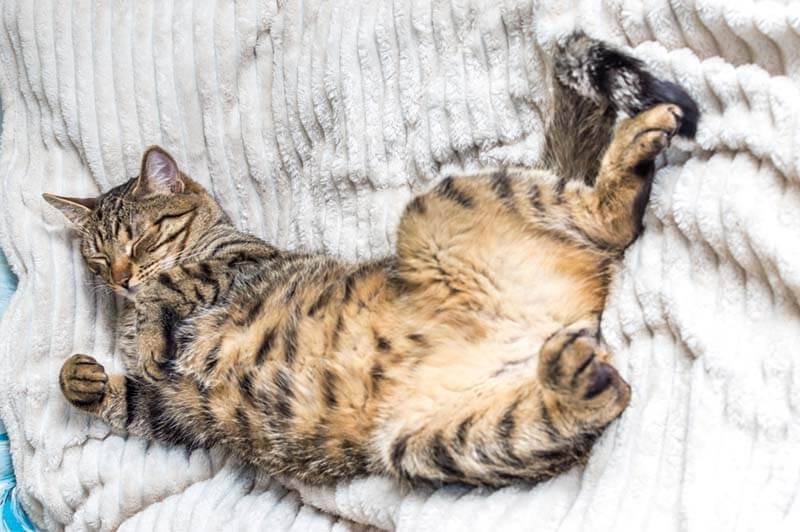
If an operative visit to the veterinarian is not possible
If it is impossible to immediately take the pet to the veterinarian, and the cat or cat has a swollen stomach, then the algorithm of actions is as follows:
Do not panic. Cats feel the owner’s stress very well and from increased attention they can also become nervous, which can negatively affect their condition.
Note the overall health of your pet. Record and count the animal’s respiratory rate per minute. Does the pet breathe with the stomach? How does he sleep – as usual or only on his stomach? Have you kept your appetite? What is his chair? Answering all of these questions will help your veterinarian make a faster diagnosis and prescribe treatment.
In no case do not carry a cat in your arms, explain this to the children. Careless movements can aggravate the condition of the pet, especially if the stomach is swollen as a result of trauma, internal damage.
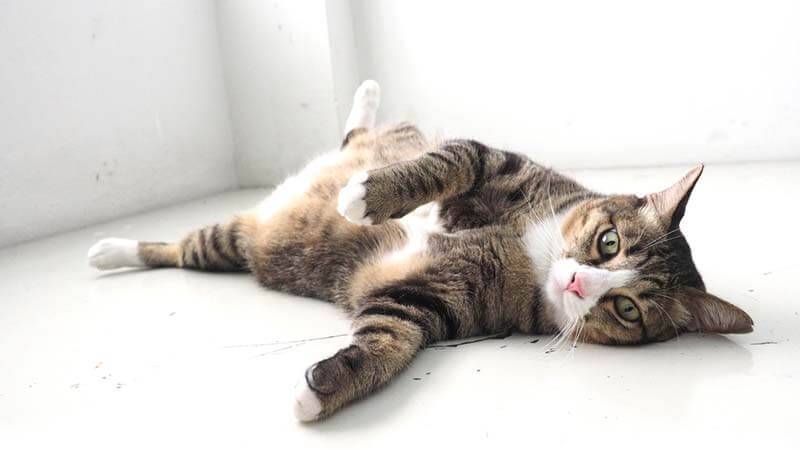
What can be done at home
In continuation of the previous paragraph, you can add:
If the cat’s belly and sides swell quickly, you can try making a cold compress. In no case should you warm such a stomach!
The pet must be isolated from other cats, as this condition can be a sign of a dangerous viral infection.
Prevention
Prevention of a bloated belly in a cat, like any other serious pet diseases, comes down to following the rules for keeping cats in an apartment:
It is necessary to regularly carry out treatment for worms: kittens – 1 time per month, adult cats – 1 time in 3 months throughout their lives.
Observe the principles of proper nutrition of animals. If you are not sure about the chosen feeding tactics, make an appointment with a veterinary nutritionist: the doctor will be able to choose not only ready-made feeds, but also a balanced homemade diet.
It is advisable not to allow pets to walk outdoors in order to avoid infection with the feline infectious peritonitis virus, against which there is currently no vaccination.
It is mandatory to install special “anti-cat” nets on the windows, which prevent not only falling out of the window, but also getting stuck in the windows open for ventilation.
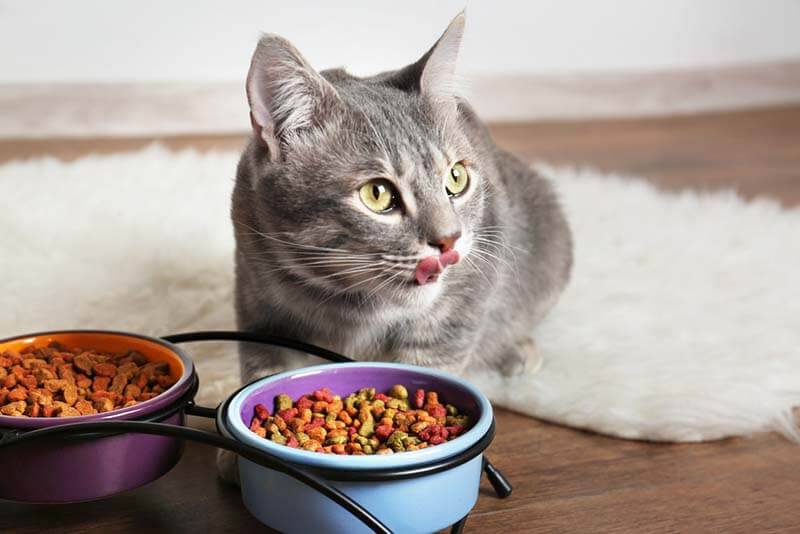
summary table
Cause of bloating | Diagnostics | Treatment |
Obesity | Pet weighing, diet analysis, palpation | Diet, changing the frequency of feeding and increasing the mobility of the pet |
Pregnancy | US | Not required |
Flatulence | diet analysis, diet therapy | Diet analysis, diet, espumizan |
Viral disease | specific treatment | Specific antiviral treatment |
neoplasm | Ultrasound, X-ray, CT | surgical or conservative treatment (chemotherapy); |
Heart Disease | ECHO of the heart | Specific treatment |
liver disease | general and biochemical blood tests, ultrasound | Symptomatic treatment and diet |
Kidney | general and biochemical blood tests, ultrasound, urinalysis | supportive care and diet |
Coprostasis | roentgen | Enema or surgery, diet and laxatives |
Injuries | US | surgery |
Helminthic invasion | stool analysis | Course of anthelmintic drugs |
October 7 2021
Updated: October 8, 2021



